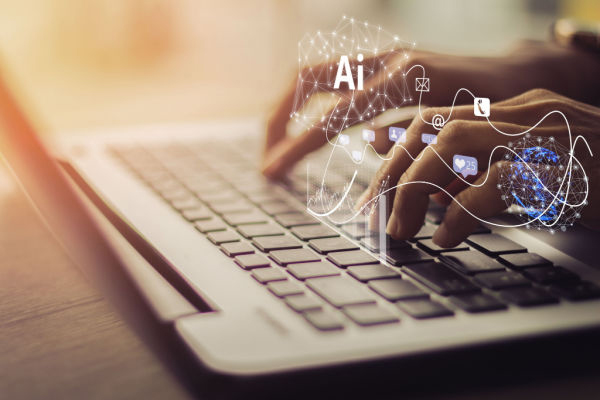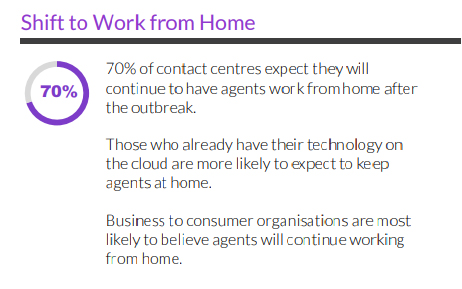If your contact center is planning to upgrade its customer experience software, you'll find you have plenty of options. In fact, you'll come across a potentially confusing array of choices. And if you aren't prepared with a well-thought-out list of requirements, you might choose a solution your contact center will quickly outgrow.
New technology should support your current CX and operational requirements, but don't stop there. Take this opportunity to reimagine your CX and operational models. Do you want to offer your customers more digital channels? What role does self-service play in your organization's future? What’s the best solution to meet your customers’ expectations today and five years from now? What does your future workforce look like and what does that mean for your technical solutions?
Selecting new customer experience software for your contact center is a task that will have implications across the business for many years. Because the quality of CX can be a competitive differentiator and impacts customer loyalty and lifetime value, businesses should know how to navigate the software market to ensure they’re choosing a software platform that will serve them well now and into the future.
In this article, we'll discuss eight features of advanced customer experience software that can transform your CX and make your contact center more agile and future-proof.
8 must-have features for your next customer experience software solution
Today's consumers are becoming increasingly demanding. They expect instant gratification, channel choice, and seamless, end-to-end customer journeys. They also expect easy, accurate resolutions and for businesses to keep their personal information secure.
But customer expectations aren't the only demands contact centers need to answer. They also need to comply with regulatory requirements, budgets, and employee expectations. This means their technology needs to have diverse capabilities.
The following customer experience software features can help contact centers meet various demands from multiple stakeholders.
1. Omnichannel capabilities
Today's customer journeys are nonlinear and typically involve multiple touchpoints. Getting to final resolution for customers, which used to be straightforward, has become more complex with the proliferation of digital channels.
Digital customers can use multiple channels in a single resolution transaction. For example, they can begin by searching a business’s website for an answer, then engage with a chatbot if the search results didn't answer their questions, and eventually end up with a phone agent if the chatbot didn't work out.
According to our research, 96% of consumers expect businesses to make it easy for them when they switch channels.
Referring back to our example, this could mean the chatbot knows what the customer had previously searched for so it can greet the customer with, "Hello! Do you still need help with [search term]?" And the phone agent would know what the customer searched for and what was said during the chat session so that the customer isn't required to repeat information about their issue.
If your contact center wants to provide omnichannel experiences, look for software with the following features.
Integrated channels
Too many contact centers simply bolt on new, disparate digital channels as they go. This creates data silos and inefficiencies for the omnichannel agents who have to access multiple applications as they help customers from different channels throughout their shifts. Optimized omnichannel customer service requires all voice and digital channels to be integrated. Ideally, the software vendor you choose should be able to seamlessly handle ALL channels in a single manner, independent of the source.
Omnichannel routing
Effectively managing and distributing all the incoming contacts from multiple channels requires omnichannel routing capabilities. Omnichannel routing uses a universal queue to organize interactions and then routes them according to user-defined rules. Those rules can include routing a specific amount of synchronous and asynchronous interactions to agents based on individual skills and capabilities. This enables a scenario where agent Alex could end a voice interaction, then handle two simultaneous chat sessions, while having three emails waiting for him in his inbox.
Unified agent desktop
To manage these multiple contacts from different channels, agent Alex needs good tools to make him more efficient and keep his work items organized. A unified agent desktop consolidates all the applications agents use in a single interface. This means agents just need to go to one place to work different channels and access CRM systems, knowledge bases, individual performance results, schedules, training systems, and other tools they use to carry out their responsibilities. Additionally, a universal inbox helps omnichannel agents keep track of their pending interactions.
2. Digital self-service
No contact center technology transformation would be complete without implementing smart, effective self-service solutions. Sixty-six percent of customers use a search engine like Google to find solutions to issues and 73% of customers prefer to visit a company website before contacting customer service.[1] In fact, 68% of customers would rather use self-service channels—like knowledge bases or customer portals—for simple questions or issues.[2]
Your agents may be friendly and competent, but most of your customers don't want to talk to them. To fulfill these customer preferences, look for customer experience software with the following self-service features.
Knowledge base
Because so many people search for help, businesses need a customer facing knowledge base, but not just any knowledge base will do. The best knowledge management systems provide answers wherever they're needed, including internet searches, websites, chatbots, and live agents. This ensures customers receive consistent information in every channel they use. Your knowledge base should also be smart enough to provide the best possible answer rather than providing a confusing laundry list of information that's unrelated to what people are searching for.
Conversational IVRs
Voice is still one the most widely used and preferred support channels, but not all phone interactions need agent assistance. Conversational IVRs leverage artificial intelligence (AI) and natural language processing (NLP) to give callers a more natural and satisfying self-service experience. Customers can simply say what they want to accomplish or need help with, and the conversational IVR will guide them through the process. This eliminates potentially confusing menus and the need to "press 1" to reach an agent immediately.
Virtual agents
Virtual agents are smart bots that can be deployed in digital channels and IVRs. These bots use NLP to communicate with customers in normal, human language and machine learning makes them smarter with use. Virtual agents are capable of understanding context and intent, which makes them effective at interpreting what people need and helping them find answers and perform tasks.
3. Extensive use of artificial intelligence
Using artificial intelligence in contact centers is a game changer for how businesses operate and deliver customer service. When selecting new customer experience software, look for a platform that uses AI throughout their applications.
We've already discussed how artificial intelligence can transform self-service, but that's just one example of how contact centers can leverage AI. The following are additional examples of AI-infused solutions.
Workforce management software
When workforce management (WFM) software is infused with AI, forecasts and schedules become more accurate and easier to produce. As an example, artificial intelligence can eliminate the guesswork about which forecasting algorithm to use by recommending the best one based on historical volume and other unique business characteristics.
AI routing
The connections agents make with customers can transform interactions from good to great. AI routing can improve customer-agent matching by factoring in customer variables such as sentiment, personality, and preferences. It then finds a qualified agent with proven success handling similar customers to create a match made in heaven.
Interaction analytics
Interaction analytics software is the tool contact center leaders have been wanting for decades. Interaction analytics is an AI-powered tool that can analyze all interactions from all channels in real-time. The insights it can produce include customer sentiment, contact drivers, potential compliance issues, trending topics, and emerging problems. Interaction analytics is an essential tool for knowing what customers are thinking and feeling and identifying friction within the customer journey that should be addressed.
Real-time interaction guidance
Similar to interaction analytics, real-time interaction guidance software also looks at customer sentiment and what the agent is saying, and then coaches agents in real-time about soft skills and provides phrase-based guidance that can improve the conversation. It adds more power and effectiveness to quality assurance programs and can help agents boost performance. Additionally, cloud-based interaction guidance tools can be used anywhere agents are located, so even remote agents can benefit from the additional coaching. Due to an increase in remote agents, traditional supervisor coaching and engagement is limited. Real-time interaction guidance ensures that all agents, independent of location, are receiving coaching for every contact.
4. Easy integrations
The best customer experience software is made even better when it's integrated with other systems used in contact centers. For example, integrations with CRM applications enable features such as "screen pops" and provide agents with ready access to the customer data needed to personalize experiences. Look for software that has pre-built integrations with leading CRM systems. Additionally, solutions that use open APIs and vendors that have a healthy development partner community can more effectively meet your integration requirements.
5. Easy configurations
Contact centers shouldn't have to rely on their software vendors to make configuration changes to applications such as ACDs and IVRs. Long lead times can hamper agility, plus fees can really add up. Contact center solutions should be easy for end users to configure so that businesses can quickly adapt to changing conditions. Look for solutions with drag and drop design studios that make configuration changes a snap.
6. Automation
The average customer service agent's day includes too many repetitive, mundane tasks, many of which can be automated. Automation can reduce this burden, improve accuracy, and help businesses address labor shortages. Contact centers that use robotic process automation (RPA) can count on digital robots to perform predictable tasks such as changing customer addresses in multiple systems, opening new insurance claims, and activating new mobile phones. When used for the right tasks, robots can perform the same process steps as humans, but four to five times faster. Bonus - RPA robots work 24/7.
7. Software and vendor use data security best practices
Relationships with customers are built on trust, which means it's critical to keep customer data safe. Contact centers often collect sensitive information that requires them to comply with regulations that protect consumer data. Customer experience software should have features that safeguard data and make compliance easier. For example, look for recording solutions that have automated and on-demand masking to ensure data such as credit card numbers aren't recorded. Additionally, look for a cloud software vendor that has a strong history of data security.
8. Fully supports work from anywhere
As we all learned from the last couple of years, the ability for employees to work remotely is essential for continuity. And work from home is here to stay—our research revealed that 70% of contact centers expect they will continue to have agents work from home after the outbreak.
Cloud-based customer experience software is the best way to support a remote agent model, but there's more to it than just routing interactions to at-home workers. Remote agents also need easy access to knowledge bases, schedules, training, performance results, and everything else on-site agents use.
Why are these customer experience software features important?
This collection of features can yield widespread benefits including the following:
- Improved CX. One of the main purposes of customer experience software is to improve CX. These capabilities will help organizations achieve that goal by:
- Creating smoother customer journeys
- Enabling personalization
- Matching customers with agents who are more likely to "get" them
- Helping customers help themselves
- Increasing accuracy
- Safeguarding customer information
- Improved agent experience (AX). Not only do these features benefit customers, they also improve the agent experience. Better scheduling, the ability to work from anywhere, automation, and a unified desktop can improve job performance, engagement, and work-life balance.
- Improved financial performance. Automation and better scheduling through AI-powered WFM software can reduce labor costs. Virtual agents (that always offer cross-sell products) and providing sales agents with complete customer information can help improve conversion rates. And enhancing the end-to-end customer journey can decrease churn and increase customer lifetime value (CLV).
- Improve business agility and continuity. These top customer experience software features empower contact centers to be masters of their own destinies. The ability to quickly change menu designs, messaging, and routing rules provide organizations the agility needed to effectively react to business disruptions and changing customer demands. Additionally, having remote work capabilities is essential for business continuity.
- Achieve compliance. Software that includes compliance and data security features will help organizations avoid costly fines while keeping customer data safe.
Make NICE CXone your next customer experience software solution
Deliver effortless experiences that create lasting customer relationships and enable greater business outcomes than ever before with NICE CXone. CXone is the market leading contact center software in use by thousands of customers of all sizes around the world to help them consistently deliver exceptional customer experiences.
To find out more about how CXone can help you transform customer experiences, watch our demo and then contact us for a quote.
[1] Accenture: Are you fundamentally rethinking your customer service experience? (2019)
[2] Salesforce: Third Edition State of the Connected Customer (2019)







